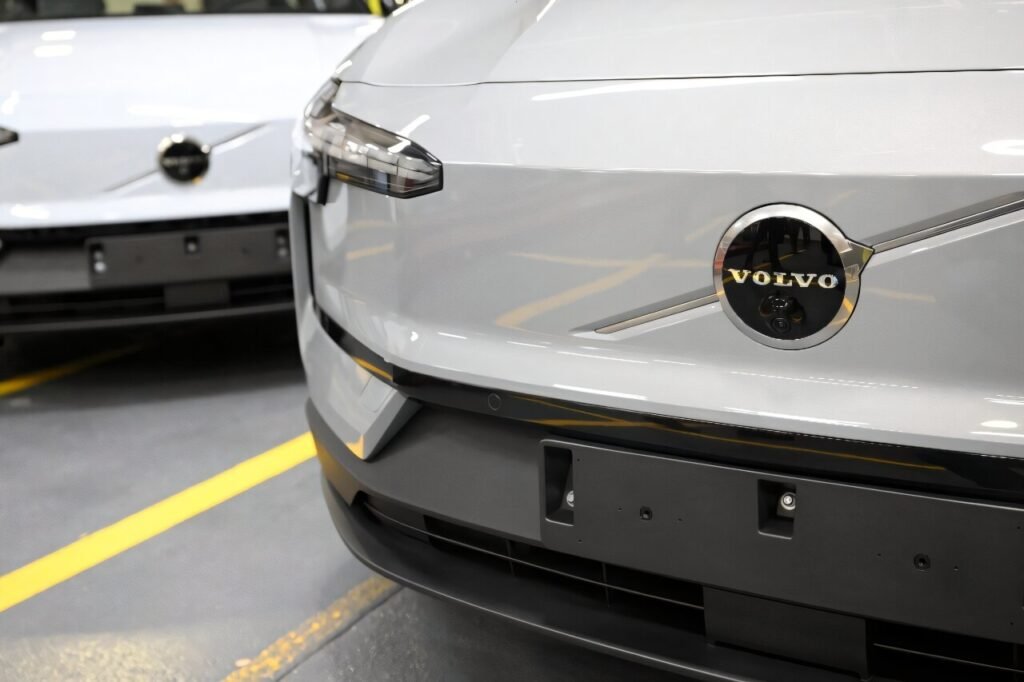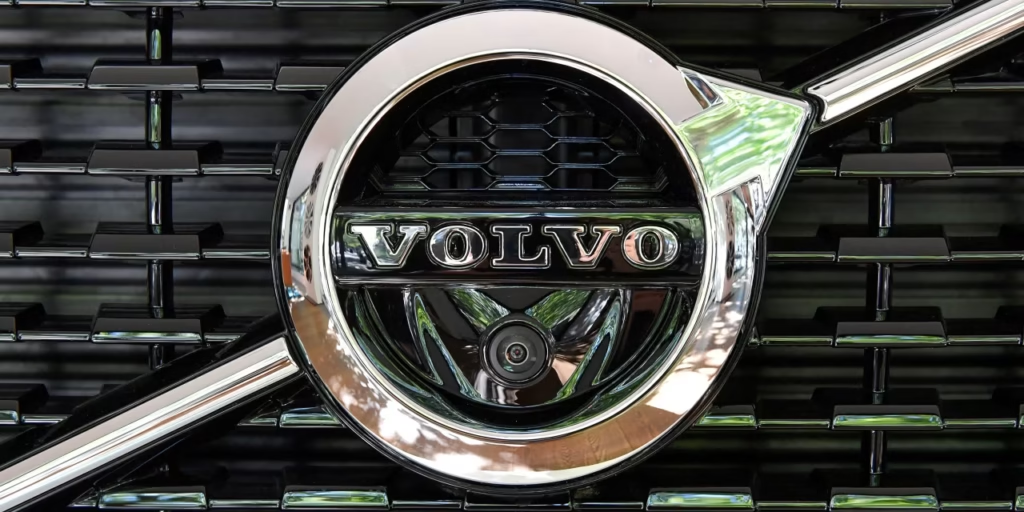Volvo Car net loss made headlines after the automaker reported a significant downturn in its financial performance due to restructuring costs and hefty impairment charges. Once known for its steady growth and innovation in electric mobility, the company now faces a challenging period marked by operational shifts, strategic overhauls, and weaker margins.
This article takes a deeper look into why Volvo Car swung to a net loss, how restructuring and impairments played a role, and what it means for the company’s future, especially as it races towards full electrification by 2030.
Understanding Volvo Car’s Recent Financial Performance
In its latest quarterly earnings report, Volvo Car Group posted a net loss, reversing a profit recorded during the same period last year. The loss was driven largely by restructuring charges and impairment costs tied to a broader reorganization of the company’s operations and partnerships.
According to Volvo’s official financial statement:
- Net loss: SEK 1.9 billion (approx. $180 million)
- Impairment charges: SEK 3.1 billion
- Restructuring costs: SEK 700 million
- Revenue: SEK 93.9 billion (up 4% YoY)
- Operating margin: Fell to 2.1% from 5.6% YoY
Despite a modest rise in revenue, these one-off costs significantly impacted the bottom line, highlighting the pressures faced during times of transformation.
What Caused the Volvo Car Net Loss?
1. Major Restructuring of Operations
Volvo is in the middle of a significant transition from traditional internal combustion engines (ICE) to fully electric vehicles (EVs). This shift requires:
- Downsizing of legacy production facilities
- Redeployment of human resources
- Rethinking supplier relationships
- Streamlining global operations
These changes are costly in the short term. The company spent nearly SEK 700 million in restructuring-related activities during the quarter, impacting its profitability.
2. Impairment Charges Due to Business Adjustments
Impairment costs accounted for more than SEK 3 billion, largely due to the write-down of assets tied to joint ventures and discontinued technology projects.
One of the key impairment areas was its reduced stake and exit from Polestar, the electric performance car brand co-owned with Geely. Volvo had previously held a strong position in Polestar but decided to withdraw direct funding and reallocate capital to its core EV initiatives.
Additionally, certain software and development assets were written off as Volvo pivots towards more agile, partner-led development models, particularly in autonomous driving and connectivity.
CEO’s Perspective: “Necessary Pain for Future Gains”
Volvo Car CEO Jim Rowan acknowledged the disappointing financials but remained optimistic about the strategic direction.
“The net loss is unfortunate but expected. We are making bold, long-term decisions to prepare Volvo for a fully electric and digitally connected future,” Rowan said during the earnings call.
He emphasized that these restructuring efforts are designed to create a leaner, more focused company capable of competing in the rapidly evolving automotive space.
Electrification Goals Remain on Track

Despite the net loss, Volvo reaffirmed its commitment to becoming a fully electric car company by 2030. This bold plan includes:
- Phasing out internal combustion engines by 2025
- Launching a new EV model every year until 2030
- Increasing EV sales mix to 50% by 2025
To support this, Volvo has invested heavily in:
- Battery development and partnerships (Northvolt, CATL)
- Next-generation EV platforms (SPA2)
- In-house software (VolvoCars.OS)
While these investments strain near-term cash flow, they are vital for future competitiveness and brand relevance.
The Role of Polestar in the Financial Hit
Volvo’s reduced financial support and exit strategy from Polestar was one of the main triggers for the impairment charges. Though Polestar remains a public company listed on the NASDAQ, Volvo chose to limit further cash injections due to its own capital priorities.
Polestar has been facing delivery delays, rising costs, and soft demand in some global markets. Volvo’s partial decoupling signals a desire to focus inward and avoid distractions during its transformation journey.
Investors React Cautiously to the News
Following the announcement of the net loss and impairment charges, Volvo’s stock on the Stockholm Exchange experienced a modest decline, though it avoided a sharp selloff thanks to:
- Clear forward guidance
- Confidence in electrification strategy
- Better-than-expected revenue growth
Still, analysts have warned that Volvo must execute flawlessly in the next few quarters to regain momentum and reassure investors about long-term profitability.
Operational Highlights Beyond the Loss
While the net loss dominated headlines, Volvo Cars did report a few positives:
1. Increased Deliveries
- Car deliveries rose 8% YoY to 182,687 units, signaling steady demand despite economic headwinds.
2. EV and Hybrid Sales Up
- Recharge models (fully electric + plug-in hybrid) made up 41% of total sales, showcasing strong consumer interest in greener alternatives.
3. Software Progress
- Continued development of VolvoCars.OS, the company’s proprietary software stack designed to power future autonomous and connected features.
Challenges Ahead for Volvo Car
1. Global Competition in the EV Space
With companies like Tesla, BYD, and traditional rivals like BMW and Mercedes investing aggressively in EVs, Volvo faces intense competition.
2. Rising Input and Battery Costs
The cost of battery minerals such as lithium and cobalt remains high. This squeezes margins even as EV adoption grows.
3. Geopolitical Risks and Supply Chain Fragility
Volvo, like other global automakers, is vulnerable to geopolitical tensions, particularly in China and Europe—two key markets for the brand.
Expert Opinion: A Temporary Setback?
Auto industry analysts see this net loss as a strategic write-down rather than a signal of deeper financial trouble.
“Volvo is taking the hard hits now to build long-term value. These are restructuring pains, not systemic weaknesses,” said Anika Andersson, a European automotive analyst with Nordea.
She further noted that investors should judge Volvo over a 3–5 year window, not quarter to quarter, especially during such a large transformation.
Looking Forward: Volvo’s Next Moves

To rebound from this loss, Volvo will focus on:
- Launching new EV models, including the highly anticipated EX90 SUV
- Scaling its own battery production partnerships
- Driving software monetization via subscriptions and upgrades
- Improving operational efficiency through automation and AI-driven supply chain management
There’s also talk of greater localization of production to reduce shipping costs and improve delivery timelines—especially critical in the competitive U.S. and China markets.
Conclusion: A Setback with a Strategic Purpose
The Volvo Car net loss is a clear example of the costs of transformation. With the auto industry at a turning point, legacy carmakers must make difficult choices to remain relevant. While painful now, these impairments and restructuring efforts could pave the way for a leaner, more innovative Volvo that thrives in the electric and digital age.
If the company stays the course and executes on its bold electrification vision, this quarter may be remembered not as a failure, but as a necessary pivot toward long-term success.
Read Next – FTC Reopens Consent Orders on Exxon Mobil, Chevron Deals






